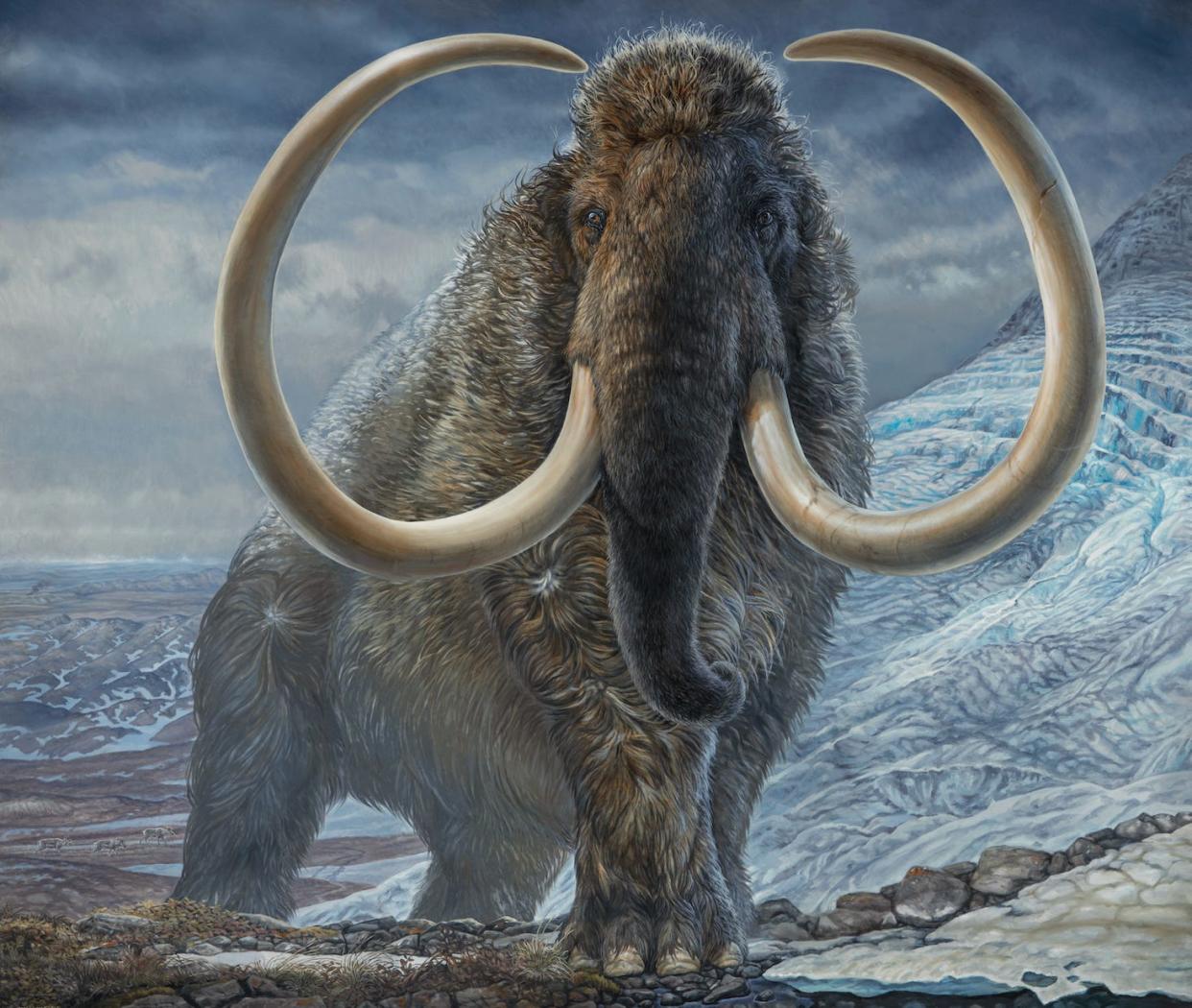Why scientists think woolly mammoths might be primed for a comeback

The concept of bringing extinct creatures back to life, once imagined in the fictional universe of "Jurassic Park," where scientists revived dinosaurs, is edging closer to reality.
Unlike the movie, real-world scientists are working on a project with a similarly ambitious goal, but focused on a different ancient giant: the woolly mammoth.
Woolly mammoths, the gentle giants of the Ice Age, once roamed alongside humans. These enormous creatures, with their shaggy hair and curved tusks, were well-adapted to the frigid climates of their time.
However, they vanished from the Earth around 4,000 years ago, leaving behind only bones and tusks for us to marvel at. Their coexistence with early humans marked a period where the natural world and human civilization intertwined closely.
The woolly mammoths went extinct due to a combination of climate change and human hunting. As the Earth warmed at the end of the last Ice Age, their habitats shrank, reducing their food sources.
At the same time, early humans hunted them for their meat, fur, and tusks, putting further pressure on their populations. This combination of environmental changes and human impact led to their eventual extinction.
Today, some scientists believe that, since humans partially caused their demise, it would be OK to bring them back and are working on doing just that. Using genetic engineering, researchers have made significant progress and, just recently, the possibility that woolly mammoths may once again roam the Earth got a little more real.
A recent breakthrough by scientists from Columbia University and Rutgers University involves creating special stem cells from the Asian elephant, the mammoth's closest living relative. These stem cells are capable of developing into any cell type.
By analyzing these stem cells, scientists hope to understand the unique traits that enabled woolly mammoths to thrive in Arctic conditions, such as their thick fur, substantial fat deposits, and distinct skull shape.
Moreover, this advancement could lead to creating elephant sperm and egg cells in the lab, a critical step towards bringing back the mammoths without extracting tissue from endangered Asian elephants.
This research not only brings us closer to the dream of seeing mammoths walk the Earth again, but also offers hope for elephant conservation. The same techniques could eventually help save endangered species by creating and fertilizing reproductive cells artificially.
Scientists are exploring the de-extinction of several other species alongside the woolly mammoth. These include the passenger pigeon, once abundant in North America, but hunted to extinction in the early 20th century; and the dodo, a flightless bird that lived on the island of Mauritius.
Another candidate is the Tasmanian tiger, a marsupial that disappeared in the 20th century.
Each of these species presents unique challenges for de-extinction, from reconstructing their genomes to reintroducing them into suitable habitats.
As the prospect of de-extinction transitions from science fiction to potential reality, we face significant ecological and ethical challenges. Reintroducing species like the woolly mammoth raises questions about their habitat and role in modern ecosystems, which have evolved without them. Concerns about the welfare of resurrected animals and the potential impact on biodiversity need careful consideration.
And we can’t forget how this story turned out in "Jurassic Park!" While that story is complete fiction, of course, the movie reminds us of the unforeseen consequences that can develop when humans intervene in nature's course. You have seen examples where cars lost a battle against a deer. Can you imagine a car and woolly mammoth mishap?
Mike Szydlowski is a science teacher and zoo facilitator at Jefferson STEAM School.
TIME FOR A POP QUIZ
What caused the extinction of woolly mammoths?
How are scientists working to bring back woolly mammoths?
Why is the de-extinction of woolly mammoths significant for elephant conservation?
What other extinct animals are scientists considering for de-extinction?
What are the ethical and ecological considerations of de-extinction?
LAST WEEK'S QUIZ ANSWERS
What signals trees to start their awakening process in spring?
Trees begin their awakening process by a combination of environmental cues and an internal clock that started counting down in early winter.
Why do trees need to hydrate after winter?
Trees hydrate after winter to nourish and energize themselves for the upcoming months of growth.
How do trees prepare for pollination?
Trees prepare for pollination by developing buds into flowers or cones, depending on the species.
What causes seasonal allergies in people during spring?
Seasonal allergies in spring are caused by the huge amounts of pollen released by trees into the air, which can cause discomfort such as sneezing, itchy eyes, and a runny nose.
How has climate change affected the timing of trees' awakening and blooming?
Climate change has caused trees to open up earlier each year, as global temperatures rise. This shift can disrupt the timing with organisms that depend on their seasonal cycles, like pollinators, leading to mismatches in food availability and pollination services.
This article originally appeared on Columbia Daily Tribune: Why scientists think woolly mammoths might be primed for a comeback

